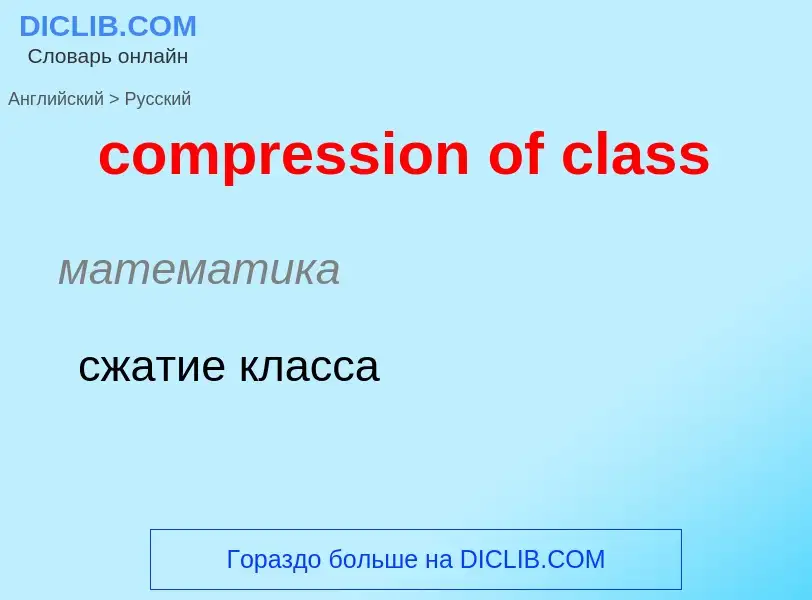Vertaling en analyse van woorden door kunstmatige intelligentie ChatGPT
Op deze pagina kunt u een gedetailleerde analyse krijgen van een woord of zin, geproduceerd met behulp van de beste kunstmatige intelligentietechnologie tot nu toe:
- hoe het woord wordt gebruikt
- gebruiksfrequentie
- het wordt vaker gebruikt in mondelinge of schriftelijke toespraken
- opties voor woordvertaling
- Gebruiksvoorbeelden (meerdere zinnen met vertaling)
- etymologie
compression of class - vertaling naar russisch
математика
сжатие класса
общая лексика
с потерями (частичной потерей) информации
обычно об алгоритме сжатия данных, например изображения
Смотрите также
общая лексика
сжатие с потерей данных, необратимое сжатие
применяется для видеоизображений и аудиозаписей. После декомпрессии качество восстановленного изображения несколько ухудшается, хотя это может быть внешне и незаметно
Definitie
.
Wikipedia

In information technology, lossy compression or irreversible compression is the class of data compression methods that uses inexact approximations and partial data discarding to represent the content. These techniques are used to reduce data size for storing, handling, and transmitting content. The different versions of the photo of the cat on this page show how higher degrees of approximation create coarser images as more details are removed. This is opposed to lossless data compression (reversible data compression) which does not degrade the data. The amount of data reduction possible using lossy compression is much higher than using lossless techniques.
Well-designed lossy compression technology often reduces file sizes significantly before degradation is noticed by the end-user. Even when noticeable by the user, further data reduction may be desirable (e.g., for real-time communication or to reduce transmission times or storage needs). The most widely used lossy compression algorithm is the discrete cosine transform (DCT), first published by Nasir Ahmed, T. Natarajan and K. R. Rao in 1974.
Lossy compression is most commonly used to compress multimedia data (audio, video, and images), especially in applications such as streaming media and internet telephony. By contrast, lossless compression is typically required for text and data files, such as bank records and text articles. It can be advantageous to make a master lossless file which can then be used to produce additional copies from. This allows one to avoid basing new compressed copies off of a lossy source file, which would yield additional artifacts and further unnecessary information loss.


